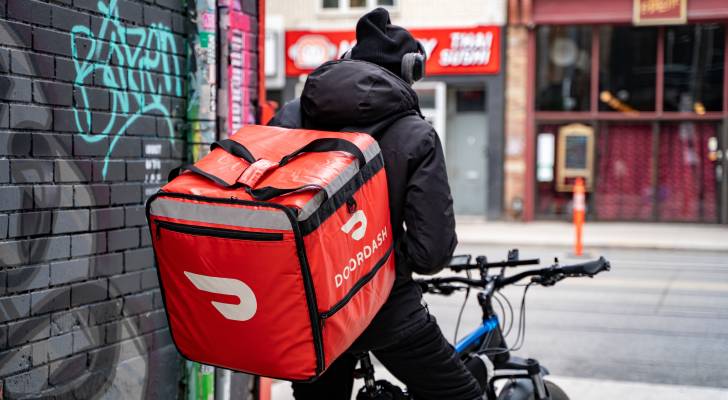
The Canadian Competition Bureau has launched legal action against DoorDash for what it calls "deceptive marketing practices" — specifically, for luring customers with low prices that don’t reflect the real cost at checkout.
The central issue? Something known as drip pricing, a tactic the Bureau says misleads customers and undermines fair competition.
What DoorDash is being accused of doing
According to the Competition Bureau, DoorDash has used a tactic known as drip pricing for nearly a decade, collecting close to $1 billion in mandatory fees from Canadian consumers.
Drip pricing happens when companies advertise an attractive base price, only to tack on unavoidable fees at the end of a transaction. These fees — often hidden until the final screen — can include service fees, delivery fees, or "regulatory response fees" that aren’t taxes but effectively act like a service tax.
At the heart of the Competition Bureau’s case is the customer’s inability to understand or know the full price of the service until after the transaction. It’s a tactic known as drip pricing and it happens when
In particular, the Bureau lists the following as factors in the deceptive marketing practice of DoorDash:
-
Unattainable Prices: DoorDash’s website and app allegedly show prices that no one can actually pay because mandatory fees are added at checkout.
-
Misleading Fee Labels: Some fees were allegedly made to look like government taxes when they were, in fact, imposed by DoorDash itself.
-
Long-Term Pattern: The Bureau says this has been going on for years, and it’s asking the Competition Tribunal to force DoorDash to stop the practice, pay a penalty, and provide restitution to affected Canadians.
A $26 billion industry built on hidden fees?
The stakes in this legal fight go far beyond a single company. Canadians now spend just over $26 billion a year on food delivery — five times more than in 2019. That’s a massive shift in how we eat, driven by convenience, tech, and lifestyle changes. But as delivery apps like DoorDash become everyday tools, the hidden costs built into these platforms can quietly drain household budgets.
If you’re ordering out once or twice a week, drip pricing could mean you’re paying an extra $5 to $10 per order in surprise fees. Over a year, that adds up to hundreds of dollars — money that most Canadians haven’t budgeted for, because the true cost wasn’t shown upfront. Multiply that across millions of users, and it’s easy to see how companies like DoorDash have collected close to a billion dollars in these fees.
The Competition Bureau’s crackdown isn’t just about holding one company accountable — it’s about stamping out a business model that quietly shifts the financial burden onto consumers, one delivery at a time.
Why DoorDash and why now?
The reason why the Competition Bureau took action is because this type of marketing is because deceptive pricing has a very real impact on the wallets of Canadians. To understand, here’s a list of the ways deceptive pricing can affect your life:
-
It distorts your budget: When you plan your meals or groceries based on prices you see online, only to be hit with extra fees at checkout, it throws off your spending plans.
-
It undermines trust: You can’t make smart decisions if you can’t trust what you’re seeing. This is especially important in an era when online services dominate everything from food to travel.
-
It raises the cost of living: In practical terms, drip pricing means you’re paying more than you expected — for less than you thought you were getting.
A pattern of misleading practices
DoorDash isn’t alone. The Bureau has taken similar actions against companies like Cineplex, Rogers, and Canada’s Wonderland. In each case, the companies were called out for either drip pricing or false advertising claims.
For example, in 2024, Cineplex was fined nearly $39 million for misleading customers with mandatory booking fees that weren’t included in the ticket price. This isn’t the only company putting the squeeze on your dollar. Money.ca’s Credit Card Editor, Cory Santos, examined how greedflation continues to take a bite out of everybody’s budget in his report: Greedflation Report: 2025.
Know the signs — and speak up
As a consumer, you can protect yourself against deceptive marketing and greedflation pricing by watching for red flags:
- If the price at checkout is noticeably higher than what was first advertised, you’re likely seeing drip pricing in action.
- If extra charges appear without a clear explanation, or look like taxes but aren’t, report them.
- The only mandatory fees that should surprise you are those imposed by the government — like sales tax.
For those impacted by deceptive pricing, the Competition Bureau encourages you to report it on their website.
Final word
What’s happening with DoorDash isn’t just about one company — it’s about setting a standard in the digital economy. Canadians deserve transparency, especially when every dollar counts. The Competition Bureau’s crackdown sends a message: misleading consumers isn’t just bad business — it’s illegal.
This article provides information only and should not be construed as advice. It is provided without warranty of any kind.

